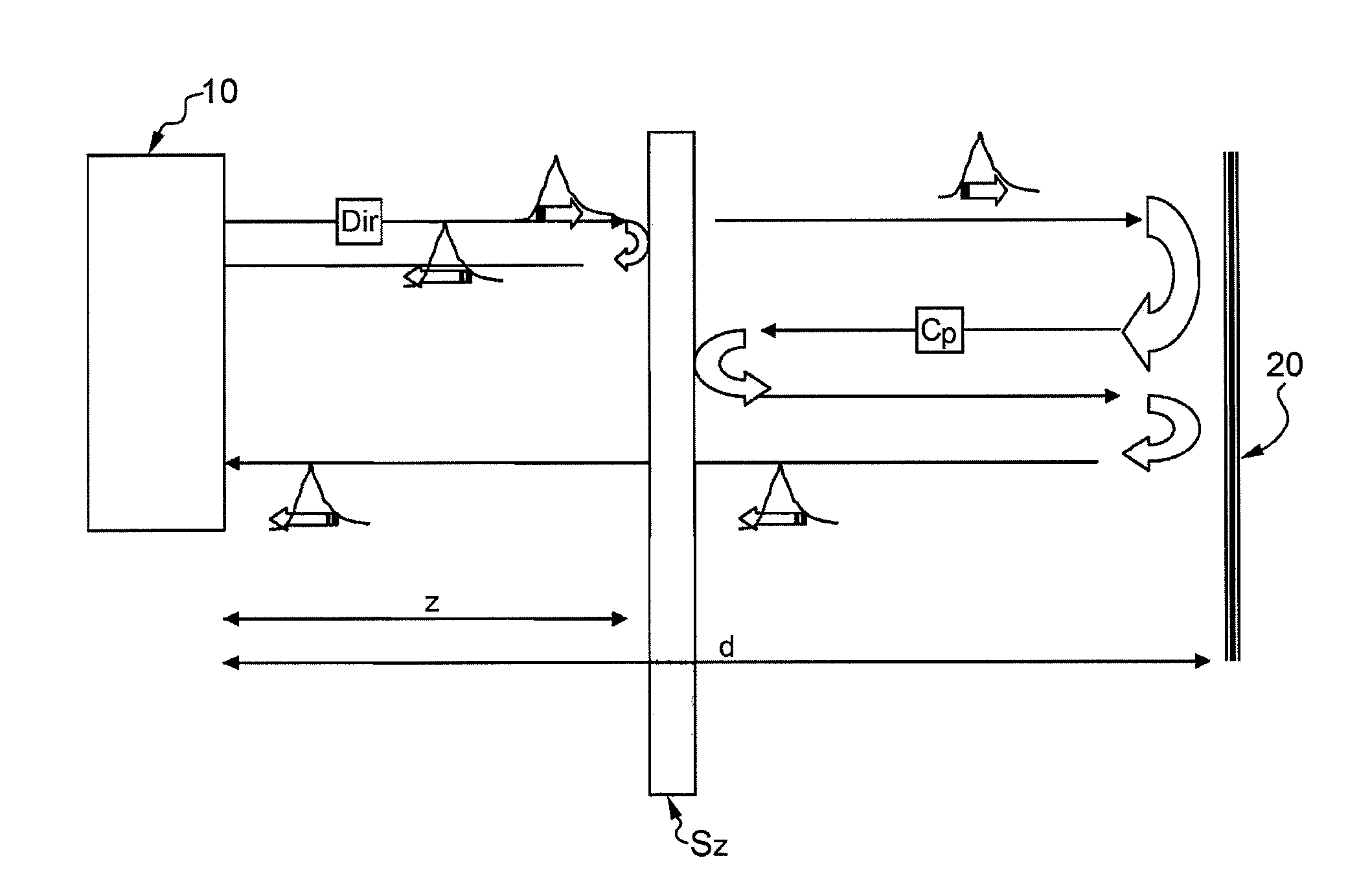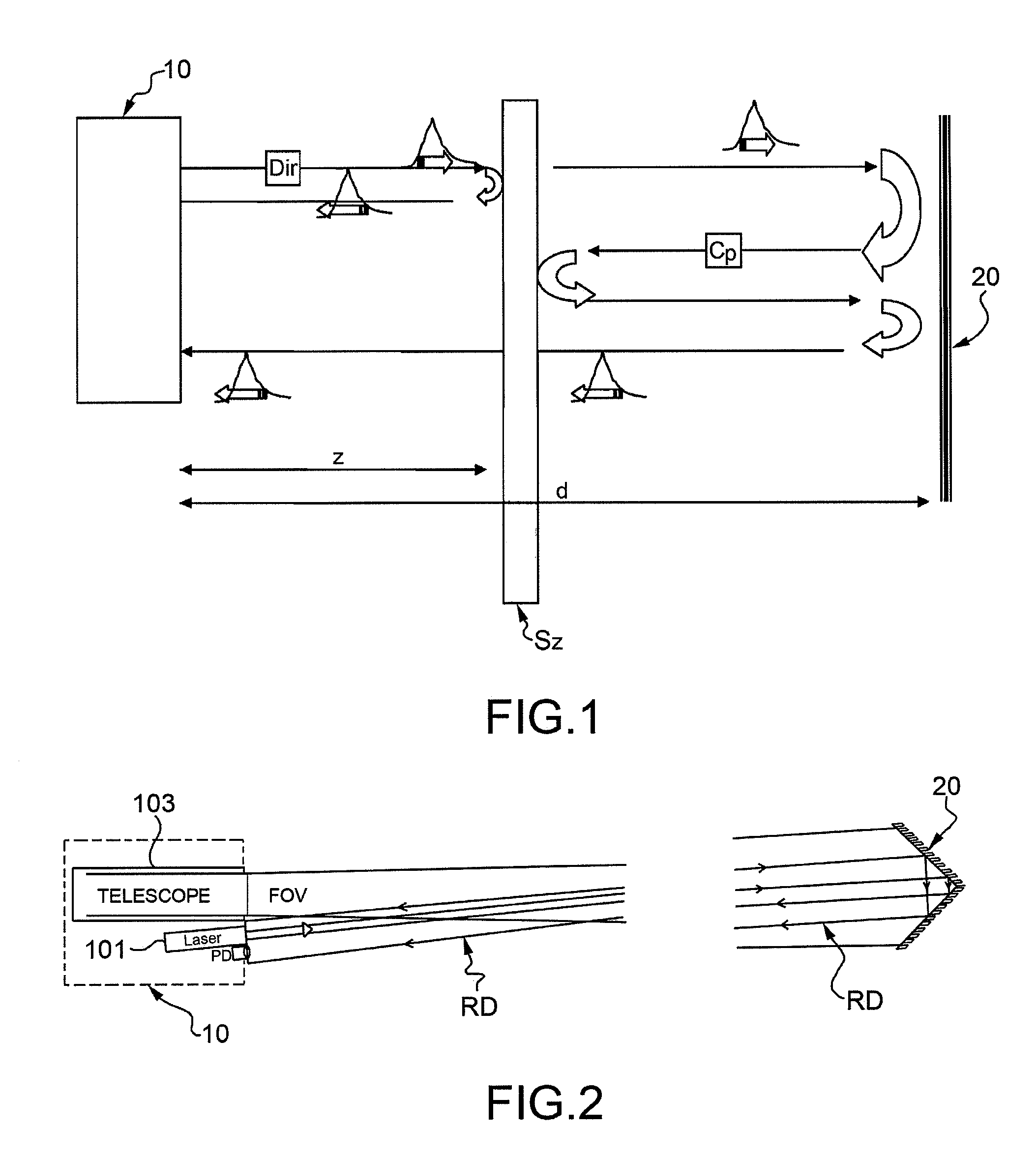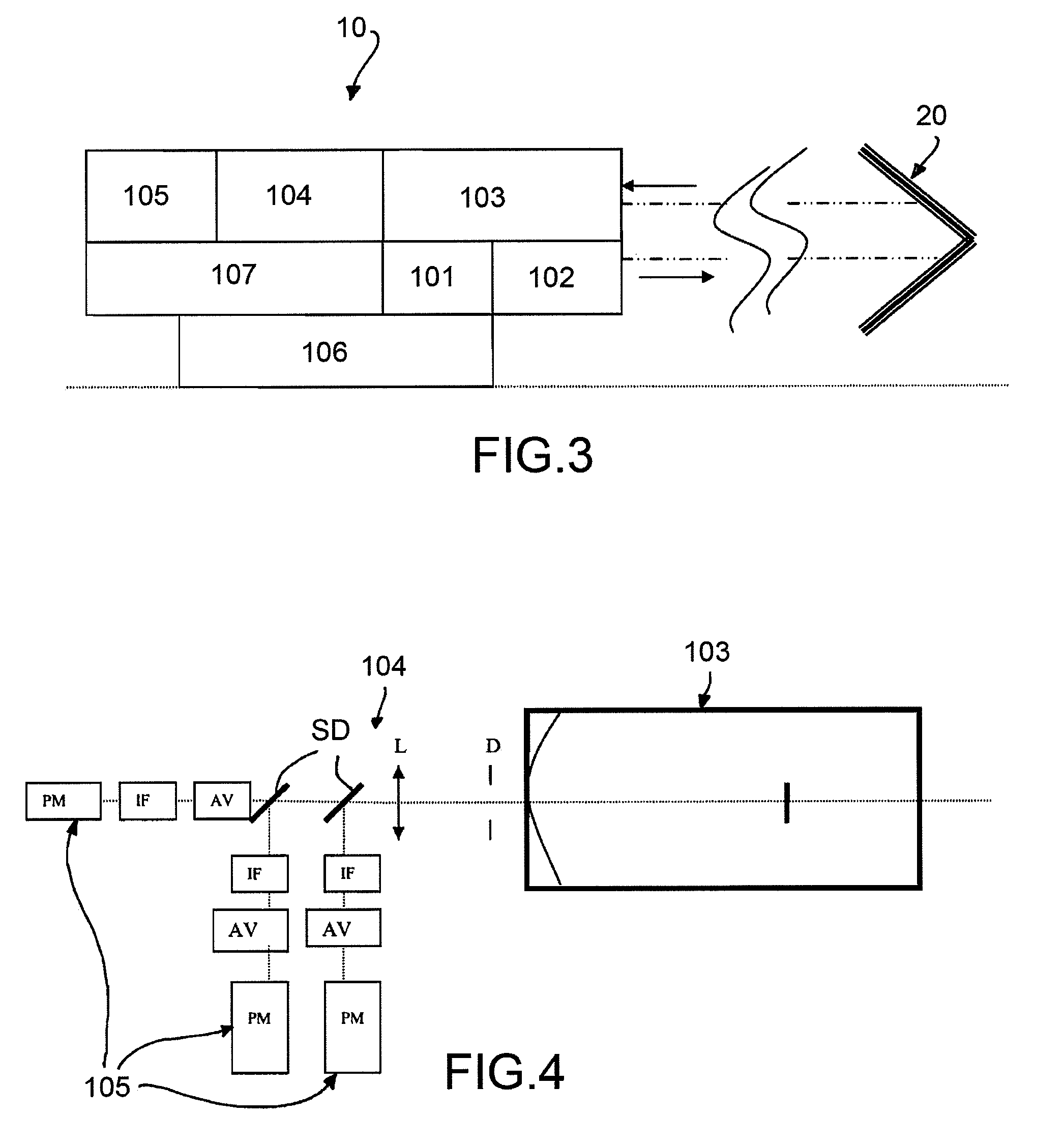Elastic backscattering and backreflection lidar device for the characterization of atmospheric particles
a lidar device and atmospheric particle technology, applied in the field of atmospheric particle characterization by means of lidar device, can solve the problems of arbitrariness extent in characterizing particles, high general constraints, and obvious higher extinction coefficients, etc., and achieve accurate determination of optical parameters and spatial distribution
- Summary
- Abstract
- Description
- Claims
- Application Information
AI Technical Summary
Benefits of technology
Problems solved by technology
Method used
Image
Examples
Embodiment Construction
[0040]With reference to FIG. 1, a method for the characterization of atmospheric particles provides for the use of a lidar device 10, which conventionally sends a laser pulse in the atmosphere, part of which signal is conventionally backscattered by the particles in the atmosphere thus generating a backscattering signal, which in the present description will be referred to as “direct”, that propagates to the lidar device 10. The laser pulse path which partially interacts with the particles, thus generating the direct backscattering signal, is indicated with Dir in FIG. 1.
[0041]The proposed method according to the invention is based on the idea to place a reflecting optical device 20, such as a mirror, on the laser beam path, at a predetermined distance d from the lidar device 10. In this manner, a part of the laser pulse that directly reaches (i.e, without interacting with the particles) the reflecting device 20 is backreflected by said device, and subsequently is backscattered by t...
PUM
| Property | Measurement | Unit |
|---|---|---|
| time resolution | aaaaa | aaaaa |
| distance | aaaaa | aaaaa |
| distance | aaaaa | aaaaa |
Abstract
Description
Claims
Application Information
 Login to View More
Login to View More - R&D
- Intellectual Property
- Life Sciences
- Materials
- Tech Scout
- Unparalleled Data Quality
- Higher Quality Content
- 60% Fewer Hallucinations
Browse by: Latest US Patents, China's latest patents, Technical Efficacy Thesaurus, Application Domain, Technology Topic, Popular Technical Reports.
© 2025 PatSnap. All rights reserved.Legal|Privacy policy|Modern Slavery Act Transparency Statement|Sitemap|About US| Contact US: help@patsnap.com



